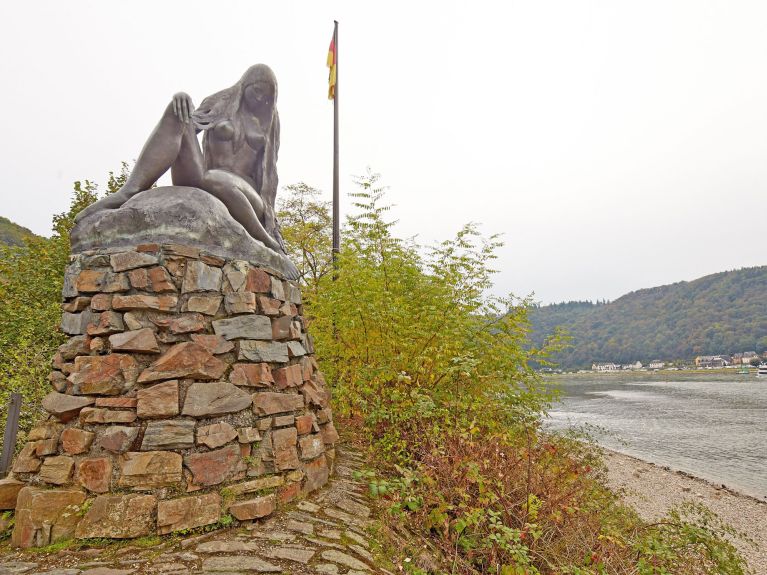The Siren Song of the Lorelei
Not far from St. Goarshausen, a grey cliff towers 433 feet above the River Rhine. Atop the cliff sits a woman—or is it a trick of the light?—combing her long hair and singing.

As sailing legend has it, she is the reason that so many ships have sunk on the 65-kilometer stretch of river between Koblenz and Bingen that joined the ranks of the UNESCO World Heritage Sites in 2002. The reality? This is one of the most beautiful – and dangerous – stretches of river to navigate.
Today, the safest route through the waters around the Lorelei – as the cliff is known – is marked for easy sailing, but during the middle ages it was known as the most dangerous section of the river. Here the Rhine is at its deepest (82 feet) and narrowest (371 feet).
In 1801, German author Clemens Brentano began the legend of the woman of Lorelei with his ballad Zu Bacharach am Rheine. In the ballad, a beautiful woman named Lore Lay convicted of bewitching men and murdering them falls to her death from the cliff, leaving an echo of her name behind her.
Heinrich Heine then refined the story in his 1824 poem Die Lorelei. The poem describes a female siren who sits atop the cliff combing her hair. Her beauty and song lure men to their deaths on the cliff below.
Heine describes her in his poem as follows:
“Sie kämmt es mit goldnem Kamme,
Und singt ein Lied dabey;
Das hat eine wundersame,
Gewaltige Melodey.
Den Schiffer, im kleinen Schiffe,
Ergreift es mit wildem Weh;
Er schaut nicht die Felsenriffe,
Er schaut nur hinauf in die Höh'.
Ich glaube, die Wellen verschlingen
Am Ende Schiffer und Kahn;
Und das hat mit ihrem Singen
Die Loreley getan.“
Listen to the Lorelei song or read a translation of the poem in English here.
Countless authors have used the story and images for their own poems, songs, and stories since.
Visiting the Lorelei
Tourists can view the rock from onboard a tourist cruise ship or drive to its tip for the best view of the surrounding countryside.
If you need a reason to visit, the UNESCO World Heritage website has described the area’s beauty well: “The Rhine is one of the world's great rivers and has witnessed many crucial events in human history. The stretch of the Middle Rhine Valley between Bingen and Koblenz is in many ways an exceptional expression of this long history. It is a cultural landscape that has been fashioned by humankind over many centuries and its present form and structure derive from human interventions conditioned by the cultural and political evolution of Western Europe. The geomorphology of the Middle Rhine Valley, moreover, is such that the river has over the centuries fostered a cultural landscape of great beauty which has strongly influenced artists of all kinds – poets, painters, and composers – over the past two centuries.“
